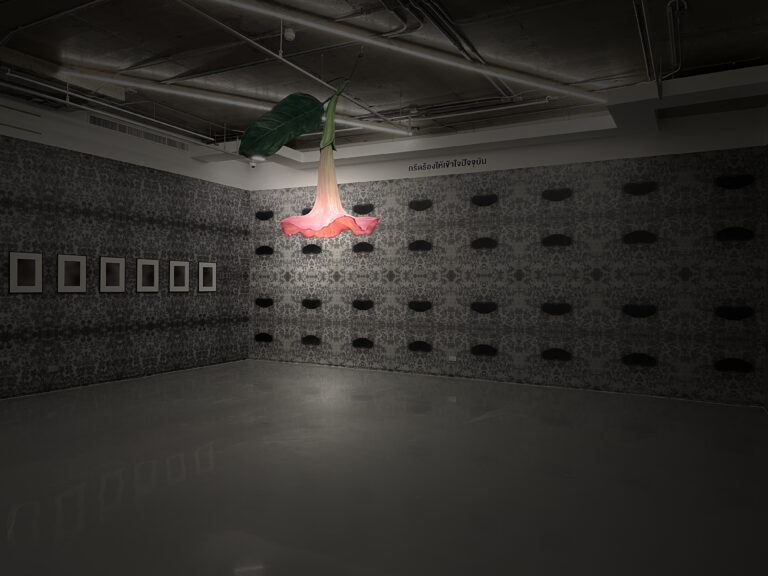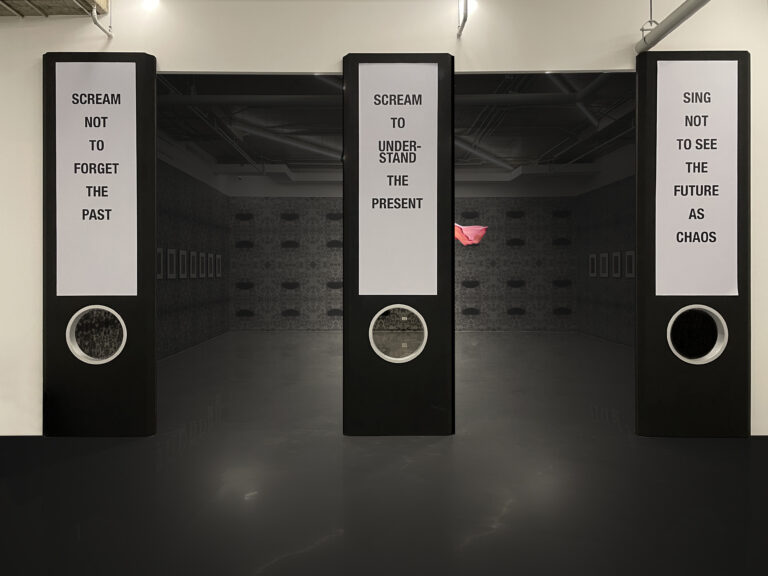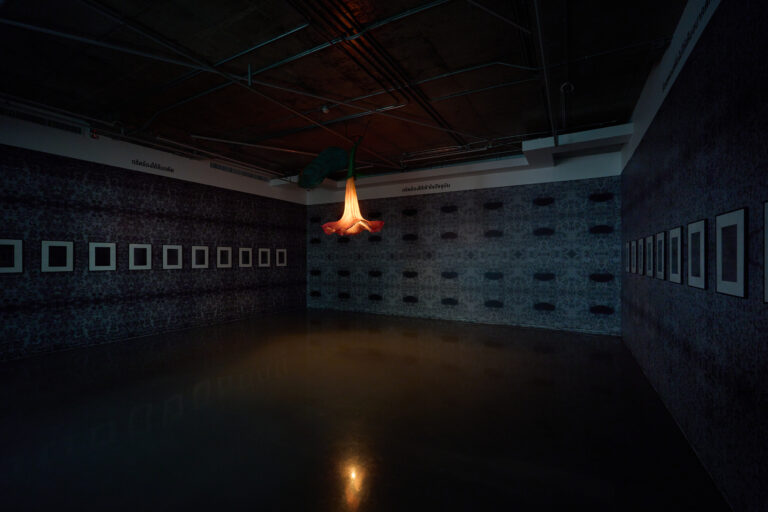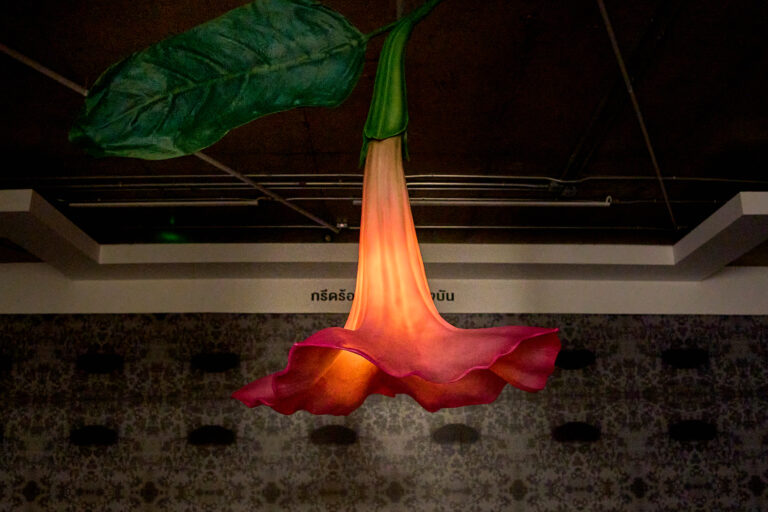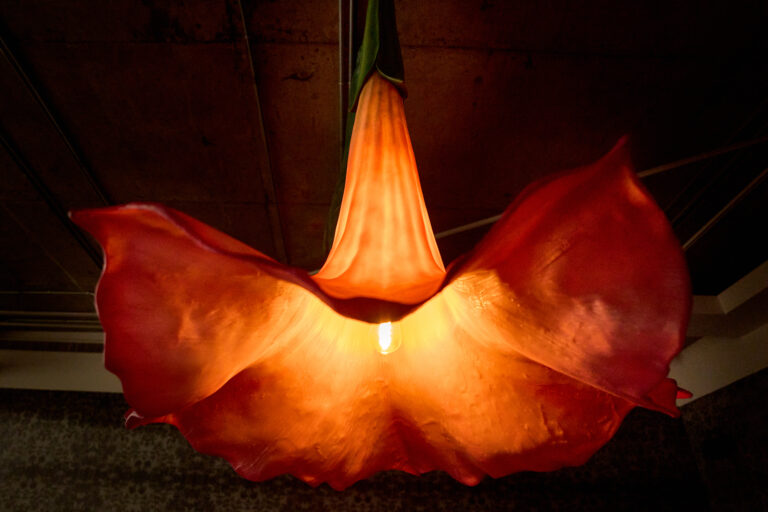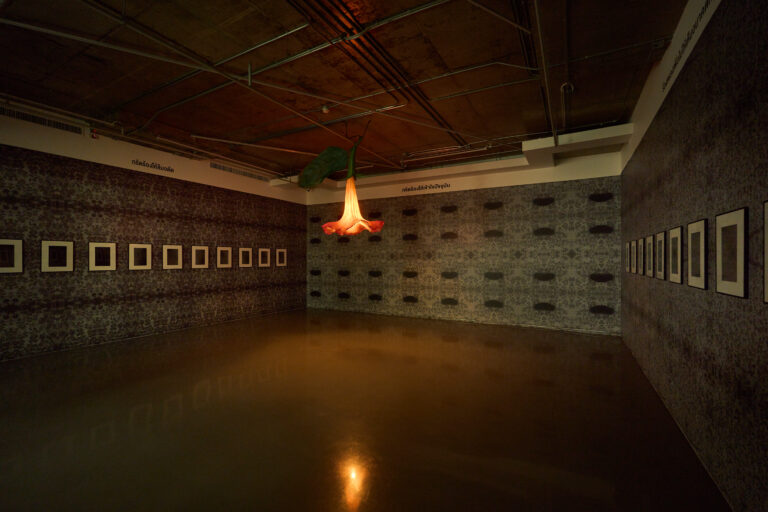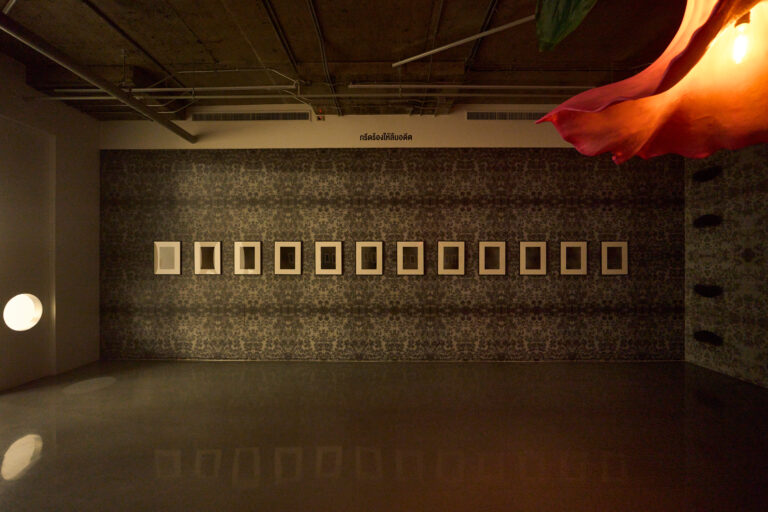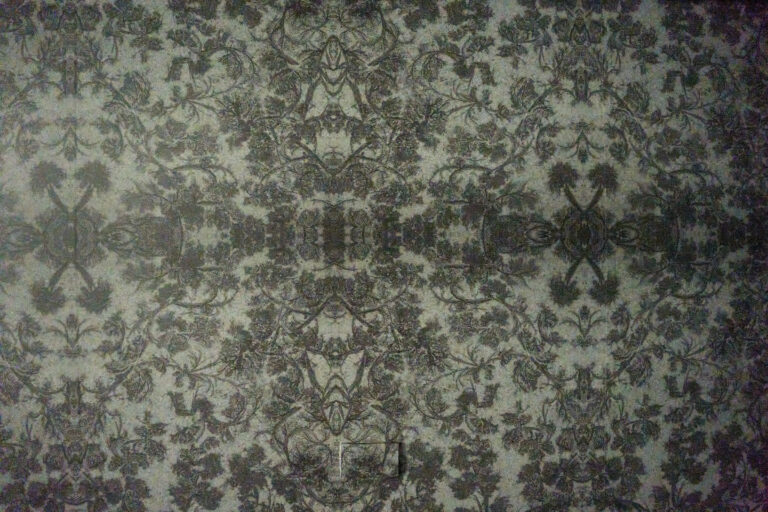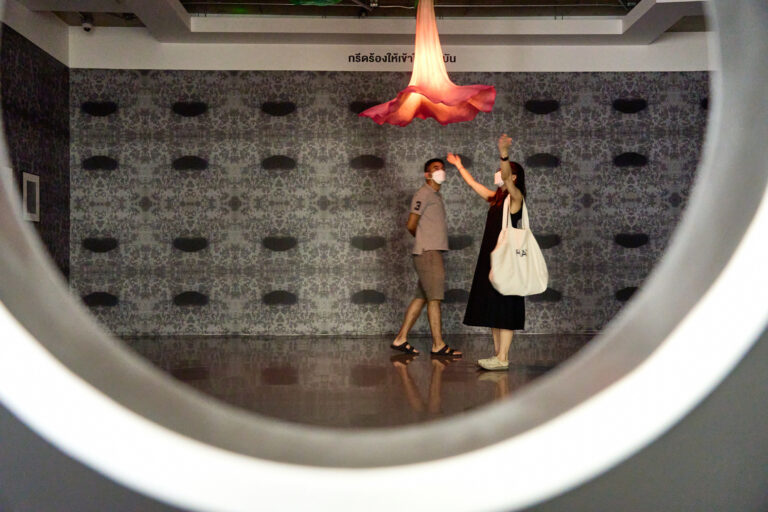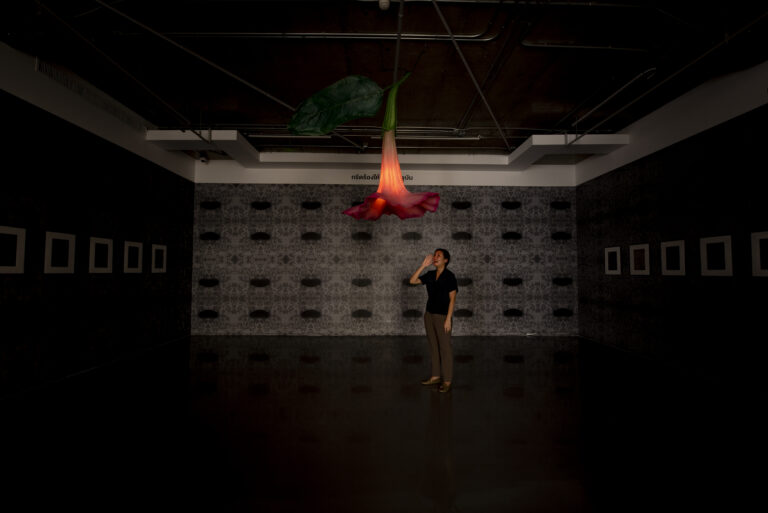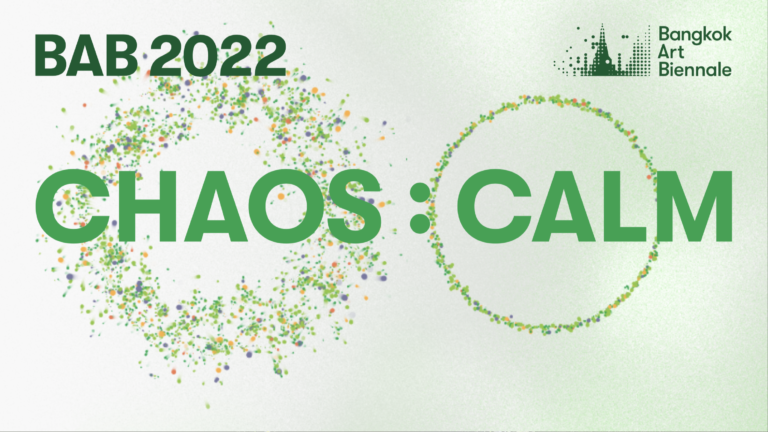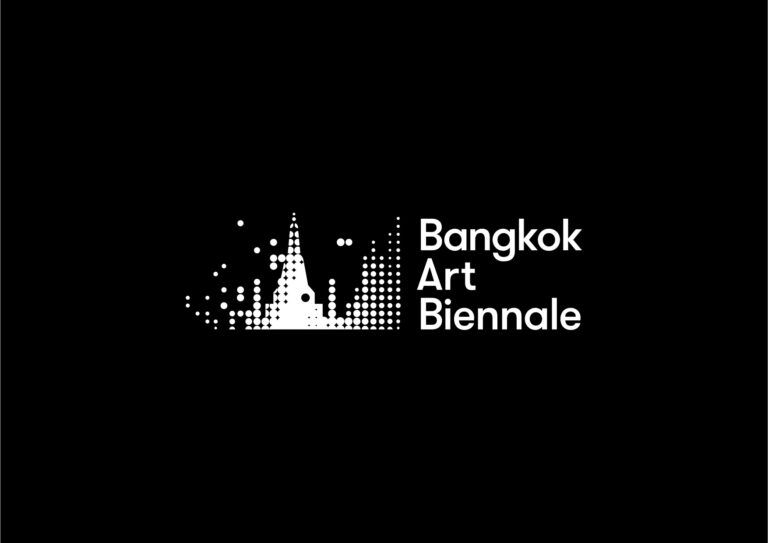Vadim Zakharov
for Bangkok Biennale 2022 ‘Chaos:Calm’
Vadim Zakharov installation:
‘Scream not to forget THE past,
Scream to understand THE present,
Sing not to see THE future as chaos.’
Bangkok Biennale 2022 artistic direction:
Chief Executive and Artistic Director: Prof. Dr. Apinan Poshyananda
Dr. Chomwan Weeraworawit
.Vadim Zakharov Artist Liaison and production management Berlin: Chiara Valci Mazzara
_
Opening to the public: 22 October 2022
-Duration: 22 October 2022 – 23 February 2023-
The installation of Vadim Zakharov is to be visited at
JWD Art Space
188/72 ชั้น 3, ซอย จุฬาลงกรณ์ 16 Wang Mai, Pathum Wan, Bangkok 10330, Thailand
This year’s Bangkok Art Biennale (BAB) will be presented under the theme CHAOS : CALM, reflecting the unpredictable conditions that the world has endured over the past few years, from the COVID-19 pandemic to climate change and socio-political unrest. The 2022 edition will invite international and Thai artists whose works reflect the turbulence, trauma and angst experienced by many during these times.
The past few years may prove to be a critical turning point in human history. In Ancient Greek mythology, Chaos refers to the void state preceding the creation of the universe or cosmos. From this state of uncertainty, the Biennale hopes to present diverse perspectives that offer new possibilities for hope and coexistence in the future.
https://www.bkkartbiennale.com/press
” Today, we are experiencing a crisis determined by the re-evaluation and questioning of many of our ideas and perceptions related to the socio-political events occurred in the world. Theodor Adorno’s statement, ”To write poetry after Auschwitz is barbaric”* feels relevant again. What happened in the Ukrainian city of Bucha feels like what once happened in the concentration camp of Auschwitz during the second world war, today. Witnessing the events in Bucha, Mariupol and other annihilated Ukrainian cities, one cannot remain silent, as an artist, a poet or as – especially – a Russian citizen.
The most important question is HOW to describe these horrible events today, when the words once used seem not to be enough anymore. Adorno wrote those words in his essay titled ‘Cultural Criticism and Society’ four years after World War II, while, today, the war in Ukraine seems to be far from its conclusion and it is presently not clear what catastrophes are still awaiting in the near future. We have no historical distance from what is happening now.
I recently made an anti-war action outside the Russian pavilion in Venice on the occasion of the opening days of the Venice Biennale 2022: but this action reflected rather my position as a citizen and human being than the one of the artist. I don’t consider this action as part of my artistic practice.
It has always been difficult -to me- to translate into art what happens around me.
I have long been thinking about the words I could use to describe the barbaric events which are now taking place in Ukraine. I excruciatingly searched for a form of description. But nothing came, of formed, into my mind. It will take time, maybe four, ten, twenty years for the words to come, for a form to take shape. Therefore I decided that the only thing I could do was to go back in time. Everyone understands, knows, read, or experienced what Hitler’s and Stalin’s extermination camps have been like for millions of people. Only by going back in history I am able to say something, or anything, today. This is how I approached the project I am currently presenting at the Bangkok Biennale 2022: “Scream…Scream…Sing”, 2022. We can’t find the words today, but we can shout, scream,… or sing!
Before entering my installation the public will read, on large scale archival folders the sentences:
Scream not to forget THE past
Scream to understand THE present
Sing not to see THE future as chaos
Once inside the room, at the centre, hanging from the ceiling, the viewer find oneself directly under a huge flower-shaped lamp, conceived as to resemble the Angel’s trumpet flower. The walls are covered with wallpaper with floral patterns and 24 framed photographs hang on the two walls on the sides: in those framed pieces, only dark grey areas of colour density are visible.
It is to be understood that what appears – as well as appearances – can often be deceiving. Behind these beautiful spots and ornaments and the flower patterns on the walls echoing a sense of peace, may hides an inner horror.
The public, walking through the installation, should explore the space and delve into the landscape, only afterwards it will be discernible WHICH one is the subject of the photographs and HOW the pattern suggesting a floral motive appeared.
The 24 photographs were taken inside the gas chimney of the German camp of Sachsenhausen. Placing one’s hands holding a camera inside a the small hole in the floor of the gas chamber and start taking pictures, it is possible to perceive and understand the cynicism of our times, and especially the cynicism and the disenchantment of the personal action of the contemporary author, such as myself.
The result of these photographs is the absence of any hint of photography, the absence of any kind of narrative or defined subject, whether abstract or figurative. The photographs depict just blurbs, a grey void. Nothing describes or implies a figurative narrative of value, there is nothing, depicted as subject of the photographs, conceived to seek the attention of art historians due to the pieces subjects per se’. The public stands before anti-photographs. And as such, they stand as a confirmation of Adorno’s words and as a proof of the lack of concrete forms to describe what is happening in the world. Those forms, shapes, words have not yet been created, they have not yet emerged.
The wallpaper is a pattern created by merging three photographs taken on the same day, January 18th 2019, at a distance of five metres from the gas chamber. On the concrete floor, due to the frosting, plant patterns formed randomly, as they usually appear on frozen windows. A sort of ornamental living carpet surfaced, which only few visitors noticed. Despite people walking on the floor and trampling on it, I managed to take dozens of photos of the floor.
To realise the wall paper I only used three shots joined together to recreate those patterns covering the walls of my installation to remind of the ornamental wallpaper used in many flats today, suggesting a sense of peace and standardized normality.
When I took the photographs in the gas chamber chimney I could only hear nothing else but my conscience screaming and the cries of the thousands of victims who had died there. In my installation “Scream…Scream…Sing” the scream is the main element. Knowing what’s behind these photographs, one has no choice but to scream so not to forget the past. Seeing the massacres in Ukraine today, one has no choice but to shout to understand the present. To keep the future from turning into chaos and to call onto oneself hope, one has to sing! The louder one sings, the brighter the light will be in the room. This is how it should be in our complex world. We are not given anything else.”
-Vadim Zakharov, 2022-
*Theodor Adorno, ’Cultural Criticism and Society,’ essay which may be read in Prisms, trans. Samuel and Shierry Weber (Cambridge, Mass.: MIT Press, 1967), p.19.
